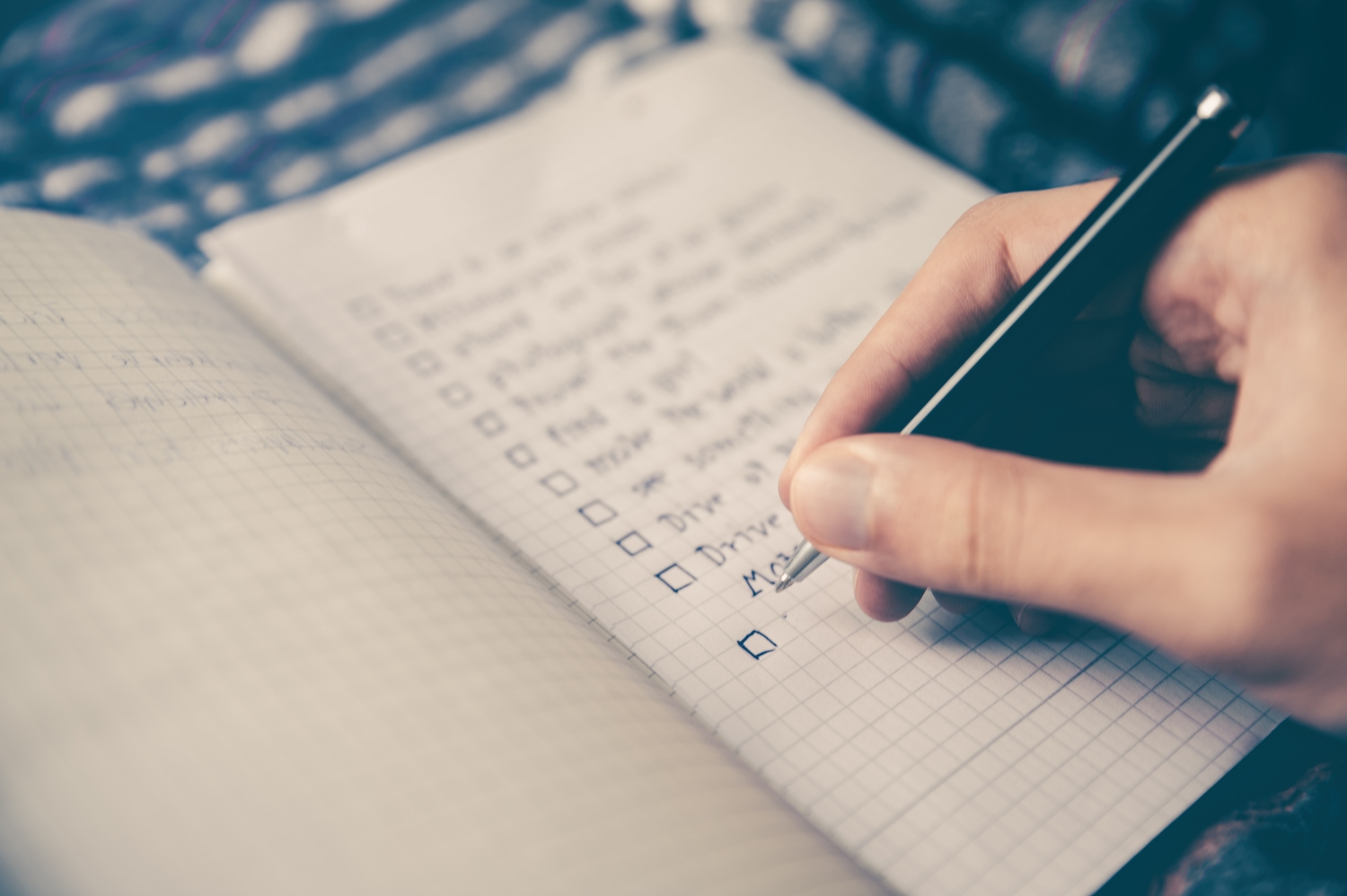

This story has been updated. It was originally published on October 18, 2019.
Between work, activities, appointments, and ever-growing to-do lists, many of us constantly feel rushed and anxious. And, all too often, the distractions of our smartphones only make this busy pace more hectic. But phones can also simplify your life—it all depends on how you use them. Take these six apps and tools, which will help you track your time, build better habits, receive reminders, and more. They can turn your phone into a serious timesaver.
1. Google Keep
To begin, you’ll need a note-taking app where you can consolidate your scribbles, lists, and fragmented notes. We like Google Keep, with its straightforward interface and compatibility across multiple platforms.
In addition to storing your notes, Google Keep gives you a few ways to organize them. For example, you can label related entries with the same color or tag them with specific words, making it easy to group together everything relating to “home,” “work,” “the kids,” and so on. You can also store a variety of note formats, such as text, lists (with or without individual checkboxes), finger- or stylus-drawn scribbles, voice memos, and images.
You can share Google Keep notes with other users, too, or put them in a more professional format by converting text notes to a Google Docs file.
Google Keep is free for Android and iOS.
2. Trello

Trello has earned a strong reputation as a tool teams can use to manage shared projects, but it works just as well for individuals and families. This is because part of Trello’s appeal is its flexibility, so you can adapt it for a variety of purposes.
This service offers mobile and web apps, and both work the same way: You create a variety of digital “cards” and arrange them in columns. Each card might represent a household chore, an item on your to do list, or a looming calendar event. The columns can represent categories of tasks, priority levels, specific dates, or any other factor you might use to arrange your cards.
Once you’ve decided on your organization schema, you can add details to individual cards to make them easier to manage. Write a description, apply a couple color-coded labels, tag the people who might need updates or reminders, and even give the card a deadline. Then, your collaborators can add comments to the cards, attach files, and drag-and-drop cards from one column to another. Your Trello setup can be as simple or as complex as you want.
For personal use, you should take advantage of Trello’s free tier. However, businesses can pay $5 to $17.50 per user each month to get features like improved integration with third-party apps and the ability to attach larger files to cards.
Trello is free for Android and iOS, with paid plans available.
3. Smarter Time
In order to organize your life more efficiently, you need to know how you’re spending your time—and that’s what Smarter Time aims to do. It can even track your activity automatically: While you’re supposed to log your time, the app will also attempt to fill in any blanks in your day, basing its work on your previous habits and on data from your phone’s sensors (speedy movement, for example, might mean you took a morning run).
Once you start feeding data to this app, it will be able to spit out reports on everything from how you spend your day to which apps are wasting most of your time. Then, if you’d like to change your daily activity balance, you can set customized goals that Smarter Time will help you reach.
At the moment, only Android users can download Smarter Time, but the company has said it is developing a beta version for iOS. That said, nothing has changed since we first published this story in October 2019, and the app itself hasn’t been updated since the end of January 2021. For extra features, like more detailed reports and additional data-export options, you can spend around $5 a month to sign up for a premium account.
Smarter Time is free for Android, with a $5 monthly premium plan available.
4. Todoist

Todoist is one of the most popular to-do list apps, and with good reason. This comprehensive tool works on just about every platform, provides a bright and intuitive interface, and includes advanced features for those who need them.
For example, this app lets you assign each item a priority. You can also arrange tasks by nesting them within one another, which lets you keep work and personal items separate. For recurring tasks like taking out the garbage or paying your phone bill, you can set to-dos that will repeat on a regular schedule—if you need to do something every week, Todoist won’t forget about it.
While the base level of Todoist is free, you can upgrade to one of two available paid plans for between $4 and $8 a month, depending on whether you pay for a monthly or yearly plan. At these tiers, you can request reminders based on either time or location, enjoy automatic backups, and receive charts showing just how much you’ve achieved.
Todoist is free for Android and iOS, with paid plans available.
5. Habit List
Habit List’s tagline is “Build a better you,” and everything inside the app is geared towards that. It tries to gently nudge you into developing good habits, such as regularly filing your paperwork or creating a cleaning routine.
To use this app, you simply mark down achievements on a calendar or schedule recurring would-be habits. Then the app will remind you about the tasks you still need to complete and send you progress reports to see how your attempt at a new routine is going. The interface’s simplicity also helps you focus: Every morning, it displays a straightforward list of that day’s tasks.
To track an unlimited number of habits and access extra features like a dark display mode, you can pay a one-time unlock fee of $5. Although Habit List is only available for iOS, Android users can try replacing it with a similar app like Habit Streak instead.
Habit List is free for iOS, or $5 for the unlimited version.
6. Pocket
One way many of us lose time is by falling into an internet rabbit hole. But when you find an interesting story, you don’t have to read it immediately. Instead, save it in Pocket and revisit it when you have more down time.
Pocket lets you cache articles when you’re browsing just about anywhere: a web browser app, desktop browsers (via an extension), email inboxes, and social media feeds. You can also organize your collected articles and videos into categories to let you easily find them again. Once you’ve saved a few stories in Pocket, the app can start recommending related articles you might be interested in reading.
Through this app, you can even catch up on your reading when you have no internet connection: Pocket will cache all saved articles for offline viewing. If you install it on multiple devices, it will even sync your collection between them.
